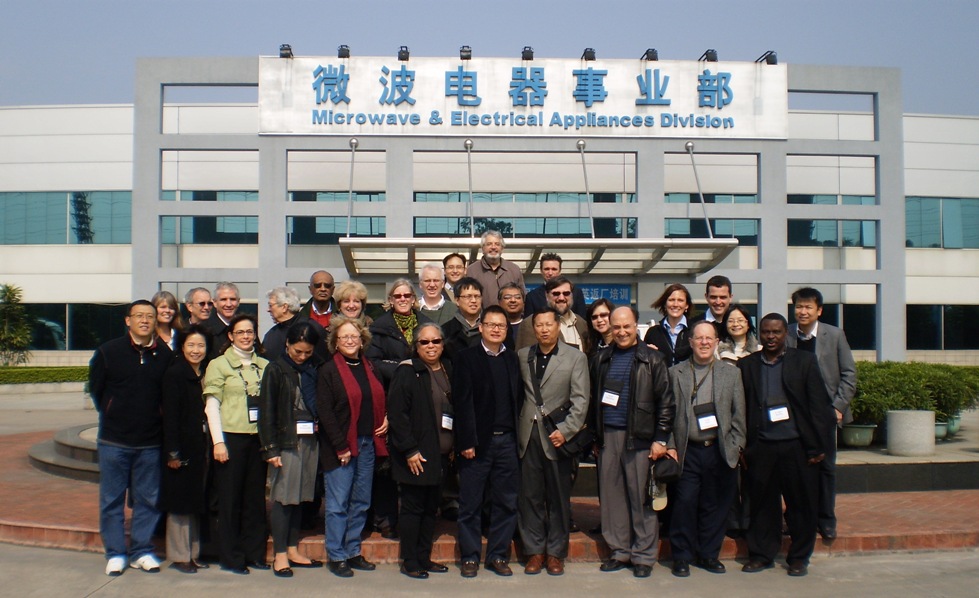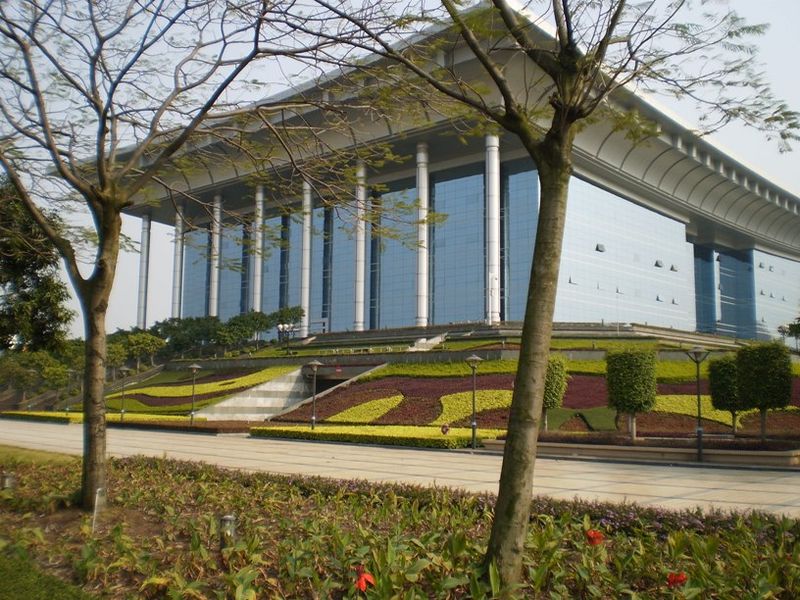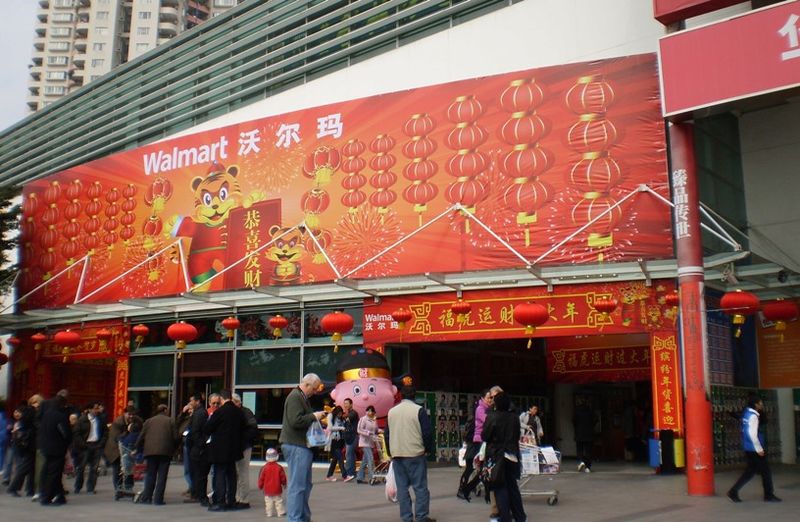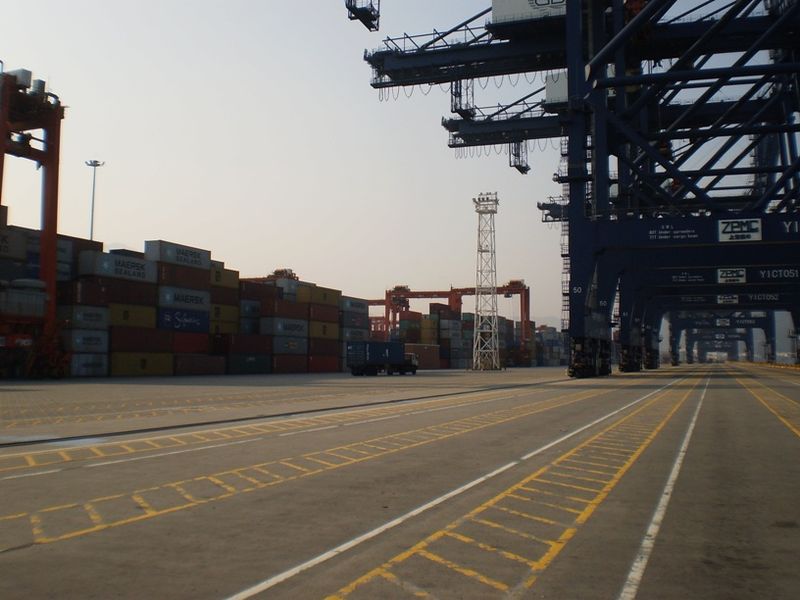Days 11 & 12: Guangzhou to Hong Kong
Day 1 is here. The next two days were all about getting acclimated.
Days 2 & 3 are here. These days were pretty much spent as a tourist in Shanghai.
Days 4 & 5 are here. Lots of meetings with companies and other experts on Chinese business development.
Days 6 is here. Our journey to Hangzhou.
Days 7 & 8 are here. Hangzhou, Alibaba.com & Harsco Metal Company & travel to Guangzhou.
Days 9 & 10 are here. Guangzhou.
Day 11 (January 12)
We started the day with a visit to the Microwave Group at Midea where they use two mottos: “my idea” or “it’s your idea”. This is a 100% privately owned Chinese company (not state owned) which was founded in 1968 by a group of 23 men for about 5000 RMB. Their initial goals were modest (to make bottle caps) but Midea (formerly May Dick) has morphed into a multi-billion dollar company with 14 manufacturing bases, several key product divisions (AC & Refrigerator; Living Appliances; Mechanical & Electrical; Real Estate & Logistics), and approximately 100,000 employees.
One major division at Midea is their microwave division (part of Living Appliances; 11,000 employees) where they make microwaves for major brands such as Samsung, Cuisinart, GE, Emerson and many others. In 2009 alone they sold 21 million microwaves. We were shown a new promotional video for the microwave division before a Q&A session. While this video highlighted coming products it also described the business “swords” of “wisdom, science and heroic spirit” that allowed Midea to compete, grow and thrive in this highly competitive market. The ended the video with a quote “Gods help those who help themselves.”
We ended our visit with a tour on one of their assembly lines, a major product testing area, a nutritional cooking laboratory and a recipe testing area as well as a component manufacturing plant. It was an impressive operation. Each assembly line makes product for a different manufacturer with different quality requirements. Many of the employees who assemble the microwaves are migrant workers from rural regions in China. While compensation packages for executives at Midea have approached US levels, compensation for other workers are more on par with industry standards. Midea could afford to pay more, but this would create hardship for their competitors. Instead they provide additional worker training, improved safety measures in their factories, meals, dormitory housing, placing workers from the same regions (with the same dialects) on the same assembly lines and teams, etc. to improve the living standard and quality of life for their workers. Even with these incentives, with the coming Chinese New Year, they mentioned concerns about what percentage of workers would return from their homes after the new year.

The head of the Microwave Group told us that their strict quality control, significant investment in innovative R&D (leading to 500 patents), and development of the steam standard for microwave cooking has allowed Midea to become a leader both locally in China and around the world. Many new products are in development that I wish were available here, such as their steaming microwaves. Many of us were dismayed to learn that it may be 2 or 3 years before some of the new steaming microwaves will be available in the USA. We gladly offered to be product testers! Midea sells microwaves to 190 countries (mostly under other brand names) yet only 30% of their sales are exports. Midea is the 6th most valuable brand in China. I suspect this is comparable to Coke or Nike in the USA.
We asked about their long term foreign goals. Obviously they have high aspirations for their products. It’s been challenging to enter the US under their own brand name (although this is a long term goal) and so for now are focusing on making products for other companies. One advantage to this approach is it has allowed them to product advances made by others that can be reverse engineered into their own products. They have also acquired rights to a unnamed (to us) US brand that might facilitate their penetration into North America. Given their 30% compounded annual growth rate from 2000 through 2009, I expect to see them succeed.
Because we spent more time than expected at Midea and later at lunch, our tour of the Shunde Administration Service Center was extremely abbreviated. One county has assembled 80 of the various government offices that an entrepreneur might need to interact with to start a new business into a single magnificently beautiful new building. This region was apparently farm land about 10 years ago and is now a lush, well planned, urban center. One activity that our group routine participated in was the Chinese Massage, especially Chinese foot massages. On our last night in Guangzhou, several of us went to the local Chinese Medicine Center(they are generally open from 11AM to 6AM) for one last Chinese Foot Massage. They generally start by having you place your feet in very hot water while you are seated on a stool. Your masseuse/masseur will then massage your back, neck, head, arms and perhaps buttocks. I did not catch my masseur’s name, but he gave me the single best massage of my life. I’d pulled something in my neck perhaps 6 months ago and have not had full range of motion since that time. At the end of 70 minutes for less than $15 US, I was pain free with full range of motion. And my feet felt great too. I made the mistake of trying the ginger wrap add-on to draw out impurities. They covered my calves in a thick paste of ground raw ginger and then wrapped my legs in very hot damp towels. I lasted at most 7 minutes before I thought my legs were going to spontaneously combust. My legs were bright red and radiated heat like sunburn for at least 3 hours. I did, however, feel terrific the next day.
Day 12 (January 13) We left the White Swan Hotel early to begin our trek to Hong Kong, starting with a visit to Walmart in Shenzhen. This stop was requested by one of our participants and for the first time at one of our shopping adventures I think just about everyone wanted a few more minutes. This was a massive 2 story Walmart that had both similarities and differences to US stores. For example, you don’t often see a live fish market in US stores.
I had developed a terrible cough in Guangzhou. It’s a beautiful city but between the construction, pollution, pervasive smoking, and humidity, my allergies and congestion spread to my lungs. Walmart was my savior but not in the way I expected. I was hoping that Chinese Walmart would have a pharmacy area where I could find Afrin nasal spray (or equivalent) and perhaps some more benadryl. I did not find either but the girl at the pharmacy pantomimed a productive cough and handed me two boxes of over the counter (for China) medicine: one a chinese herb and one that was called mucosan (which based on the name made me hopeful that it would help). She also offered me some prescription drugs (I declined) and a nasal spray of Silver (Ag+) extract (I also declined). I started feeling better almost immediately. I googled the drugs several days later and learned that mucosan (which does not seem to be available in the US) is a terrific expectorant (great stuff). One of the components of the herbal preparation was ephedra (now banned in the USA). That’s disappointing as it worked wonderfully and had the side benefit of making me feel very alert, and positively perky.
Shenzhen was an incredible city. Over the last 30 years, it’s grown from 20,000 people to approximately 8 million. It’s home to a variety of tourist attractions such as Window of the World, Happy Valley, and Splendid China Park. From Walmart we journeyed to the Yantian International Container Terminal(YICT) in Shenzhen which is one of the largest shipping ports in China. They began operations in just 1994 as a joint venture between the Hutchison Port Holdings(HPH) and Shenzhen Yantian Port Group (YPG). YICT has many advantages including: (1) its location near the manufacturing hub in the Pearl River Delta; (2) its proximity to Hong Kong; (3) the depth of its water; and (4) the great road serving YICT. It takes 11 days for a container ship to travel from Shenzen to Los Angeles. Shipping is carefully controlled because while YICT is open 24 hours a day 365 days per year, US ports are generally open only Monday through Friday.
YICT directly employees 2,500 people but through subcontractors and various support industries may be indirectly responsible for more than 100,000 jobs in the region. The recent global economic downturn decreased their growth rate for exportation and resulted in a major surplus of empty containers being returned. Something like 500,000 containers were returned empty last year. More than 20 billion Hong Kong dollars have been invested over the last 15 years to develop and expand YICT. Recently they have also invested heavily in their IT infrastructure so that users can check the status of their shipping container in real time on line. YICT also invests heavily in employee training to nurture talented employees. More recently they’ve embarked on a number of green initiatives that also result in significant cost savings such as replacing diesel power with electrical systems to decrease exhaust and carbon dioxide emissions.
After our tour of YICT we crossed the border by bus into Hong Kong. This required two checkpoints. To leave mainland China we needed to exit the bus, collect all of our bags and clear customs to leave China. We then re-boarded the bus, drove 100 meters, and repeated the process to enter Hong Kong.
Our final hotel was the Royal Pacific Hotel in the Kowloon district of Hong Kong. These rooms were the tiniest by far on our trip and the hotel gym was the smallest and least equipped. Luckily the gym was open 24 hours so I used the facility at odd hours (e.g. 1 AM) to ensure that I could use the equipment I needed. At the other hotels there were 6 or 7 of us that routine used the gym between 6 and 7 AM. This would not have been possible at the Royal Pacific Hotel.


